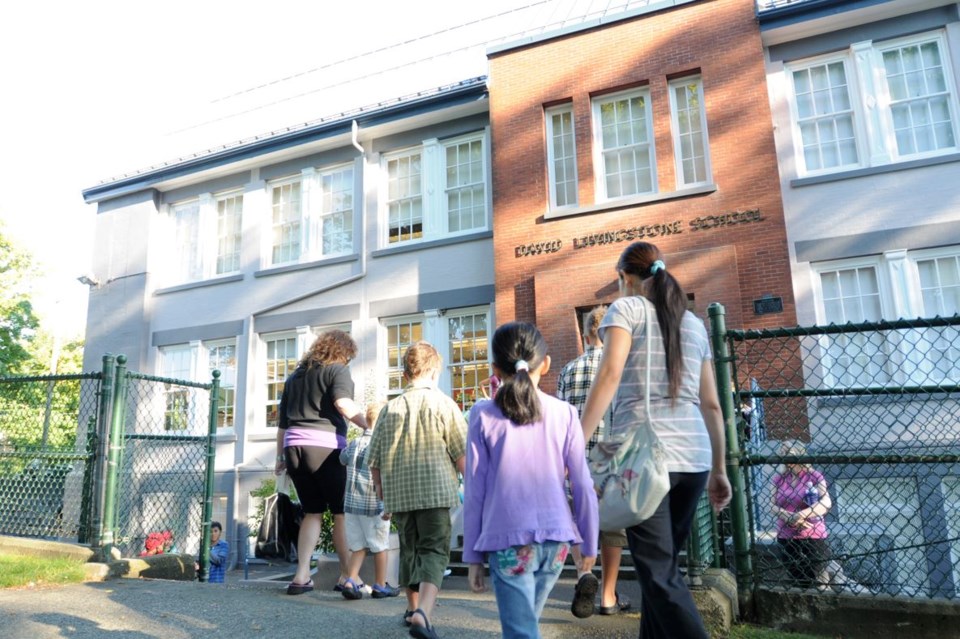Parents of young children are often surprised to learn that in many B.C. elementary schools, classes include students from more than one grade.
Split classes — also known as combined or multi-age classes — are commonly used in schools, but they’re not always readily accepted by parents. Such classes will include, for example, students from Grade 2 and 3 in one class.
A Facebook friend recently posted about split classes, asking others for their opinion and experience. The post got about 50 comments and most of those said this type of class is completely normal and often beneficial for students. But some parents were anxious about it, particularly those concerned about their child being the older child, placed with a younger grade.
Combined classes have been around forever. Of course, one-room schoolhouses were all combined classes. But even in the 1970s, when I was in elementary school, I was in a combined class for three of my eight years. My two children were in combined classes for their entire elementary school experience.
And it doesn’t end at elementary. Just like in life, there are often combined classes in high school, especially for electives. In university, every class is a combined class, with some older students returning to school and others at various points in their post-secondary education.
Despite what parents might think, there are advantages to combined classes, both for the older and younger children. While research from the University of Saskatchewan found no significant difference in students’ academic achievement between single and multi-grade classes, there are social benefits, many of which flow to the older children in the grouping. They learn to be leaders, they get an opportunity to develop their confidence and they can also cement their own learning by teaching the younger students material they’ve already mastered.
“Students in multi-age classrooms demonstrate more positive attitudes toward school, greater leadership skills, greater self-esteem, and increased pro-social and fewer aggressive behaviours, compared to peers in traditional graded classrooms,” says a Â鶹´«Ă˝Ół»School Board brochure on combined classes. Ěý
In families, children are set into their sibling group — they’re either the oldest, the middle or the youngest, or perhaps an only child. Those roles will shape their personality and stay with them for life. But combined classes give children the opportunity to experience a different alignment, one in which they’re sometimes the oldest and sometimes the youngest. As anyone with siblings knows, there are advantages and disadvantages to both.
Children learn and develop at different rates. Not every seven-year-old has mastered the same skills, so that means in any Grade 2 class, there will be a wide range of development, knowledge and abilities. Even in a single grade class, teachers must teach to students who need to stretch themselves and others who are struggling. In a combined class, there will be a slightly wider range of abilities.
Combined classes are not necessarily used in schools solely because they offer some benefits to students. There is absolutely a practical, administrative argument for combined classes. They give educators more flexibility in organizing classes, so that the same group of students isn’t always together from Kindergarten to Grade 7.
This means that if there are some students who don’t get along for reasons that could range from bullying to a simple personality clash, they can more easily be separated. For example, if there are three different choices of Grade 3 class, say a 2-3 and two 3-4 classes, rather than one single class, there are more options for placement.
One significant benefit of combined classes is that they open up the possibility for a student to stay with the same teacher for two years in a row. Research from the American Psychological Association shows that students who have close, trusting relationships with their teacher will attain higher levels of achievement.
Having the same teacher for two years in a row means learning can be picked up in September right where it left off in June. The trust and expectations are already there and a new relationship doesn’t need to be forged.
Life is not organized into single age groups. Sometimes in life, we are the mentor, at other times the mentee. Sometimes we’re the boss, other times we’re not. Either way, we have to work together. Giving children the opportunity to experience different roles in elementary school does what school is designed to do — prepare students for real life.
Tracy Sherlock writes about education and social issues for the Courier. Reach her atĚý[email protected].
Ěý
Ěý
Ěý



